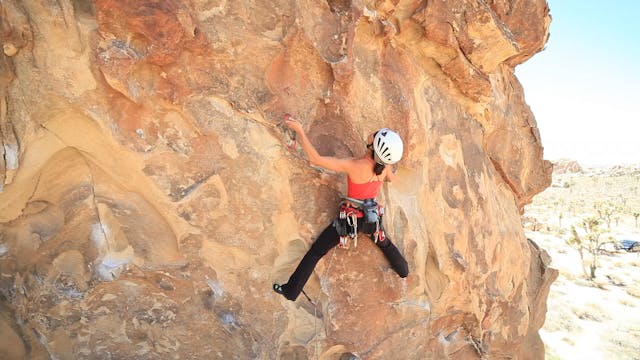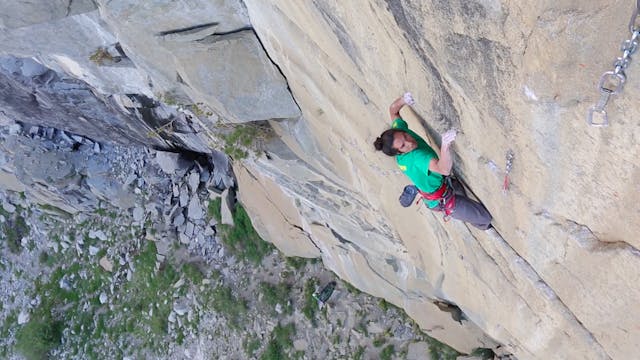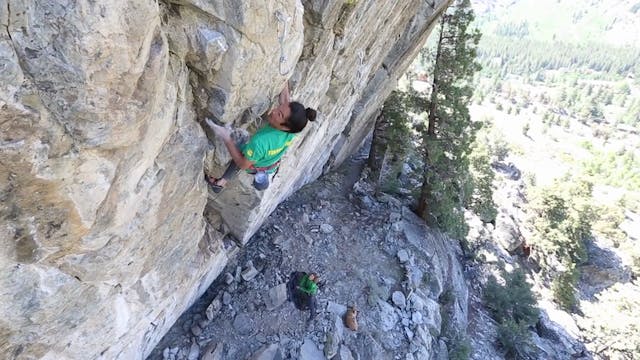Sport Climbing: 2. Clipping Considerations for the Leader
Sport Climbing
•
4m 13s
In this video we review clipping considerations for the leader while sport climbing. There are two main actions when clipping on lead:
1. Clipping the quickdraw to the bolt with the top carabiner
Clip the top carabiner of the quickdraw to the bolt such that the spines of both carabiners are on the same side as the climber will be climbing past it. That is, if you will move up and left after clipping the bolt, the spines of the carabiners should also be on the left side. This helps ensure the rope doesn’t unclip from the carabiner in the event of a fall.
2. Clip the rope into the lower carabiner of the quickdraw
IMPORTANT NOTE: The rope must run through the lower carabiner such that the climber’s strand ends up on top, coming out from the wall to the climber—and the strand going back to the belayer is behind, or on the side of the rock.
There are two main clipping techniques:
Style 1. Pinch the rope between your thumb pointer finger. Place your middle finger in the lower carabiner to stabilize it. Press down with the middle finger while rolling the rope through the gate.
Style 2. Hold the rope between your thumb and index finger. Grab the spine of the carabiner with your whole hand, and make a fist. Use your thumb to push the rope into the carabiner.
There are many nuances, so watch our athletes to pick up some of their own personal styles. Then, practice at home to figure out how to make it feel right for you, and hard-wire the mechanics so you don’t have to think about it on lead.
Be sure to practice with both left and right hands, and with the gates facing both left and right, for a total of four possible clipping positions.
Clipping efficiency for speed, endurance and safety:
In traditional and ice climbing, leaders often try to clip when the draw is between their waist and chest. This is more physically efficient, as you don’t have to pull rope as far—but it can also be safer because you’re not pulling as much slack out. If you’re close enough to the ground and you pull a lot of slack, then miss the clip and fall, you could potentially hit the ground.
Some routes, however, have obvious clipping holds or stances which may require you to pull out slack and clip above your head. This may be most efficient at times, so you can move fluidly through a crux sequence and reach your next clipping stance or hold.
Routes that were put up using a “ground up” method rather than being bolted on rappel will often have relatively obvious clipping stances. See if you can spot these and use them. Some climbers today might be smaller than the first ascensionist, so feel free to curse the tall person who drilled that bolt you can’t reach, and then thank them for taking the hours and spending the cash to put up those bolts at all. Blessing and a curse!
A couple of dangerous situations to avoid are “Back Clipping” and “Z-Clipping”. For more on these, see our video’s on “Avoid Back Clipping” and Avoid Z-Clipping”.
We hope you found this video helpful. Feel free to comment below with questions or thoughts!
Please remember, climbing is inherently dangerous. Climb at your own risk.
Up Next in Sport Climbing
-
Sport Climbing: 3. Quickdraw Consider...
In this video we review quickdraw considerations for the leader while sport climbing.
- Carry enough draws for the route plus two extra “oh crap” draws AND extras for the anchor if needed. Typically ten to twelve draws are plenty, plus any gear needed to rappel, lower, clean, or top rope the ...
-
Sport Climbing: 4. Crimping Techniques
In this video we review proper crimping techniques used while sport climbing. As you progress in sport climbing, certain routes will require you to use impossibly small holds. Proper crimping technique is vital to sending your sport climbing project—and to keep your tendons from exploding!
Tw... -
Sport Climbing: 5. Dynamic Movement
In this video we review dynamic movement. Dynamic movement, in contrast to static movement, is a very gymnastic way of climbing. It includes the flashy move known as the “dyno”—an explosive way to gain upward movement.
It is often wise to move statically and methodically up the wall, staying ...


